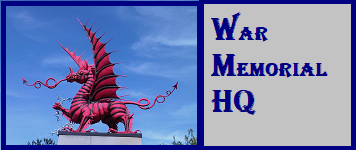Teaching With Memorials
War Memorials and Military Cemeteries can be part of teaching and learning in both K-12 and college courses. Examining more than just the "face" of the memorial teaches students to investigate and critically examine these primary sources. Asking who built a memorial and when it was built and where it was place prompt discussions of the meaning and purpose of these commemorations and how this relates the event/person being commemorated. Students should ask critical questions about who built it, who funded it, when it was constructed, the symbols that are used and where it is located. In addition, observers of memorials should research the person/place/event that is commemorated for accuracy of the information provided at the site of commemoration.
Public spaces of memory sites are designed to "create" communal memory of an event, time and place. Both the physical location of the site and what it contains have purpose and meaning. Observing how visitors interact with the site also illustrates the emotional response the site elicits and its effectiveness. Iconography and symbolism at the site are more subtle aspects of the imagery and memory being created. Thus, studying the design, art, architecture and geography of memorials in addition to history incorporates a variety of disciplines and critical thinking skills.
Memorial sites are not static either. They continue to develop and are subject to change over time in any society. Historical memories are subject to re-evaluation and the geographic location of the sites also undergoes change and development with the society around it.
As subsets of this page are worksheet examples that can be used as part of coursework with students in a variety of disciplines. They can be used in whole or part through Creative Commons licensing and additional ideas are welcomed.
